
How to Use Waveshare 1.69 TFT: Examples, Pinouts, and Specs
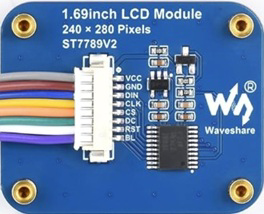
 Design with Waveshare 1.69 TFT in Cirkit Designer
Design with Waveshare 1.69 TFT in Cirkit DesignerIntroduction
The Waveshare 1.69 TFT (Manufacturer Part ID: 1690) is a compact, high-resolution display module designed for embedded systems and DIY electronics projects. With a 1.69-inch diagonal size, this TFT display offers vibrant colors and excellent clarity, making it ideal for applications requiring a small yet visually appealing display. Its compact design ensures easy integration into a variety of projects, including IoT devices, handheld gadgets, and user interfaces.
Explore Projects Built with Waveshare 1.69 TFT
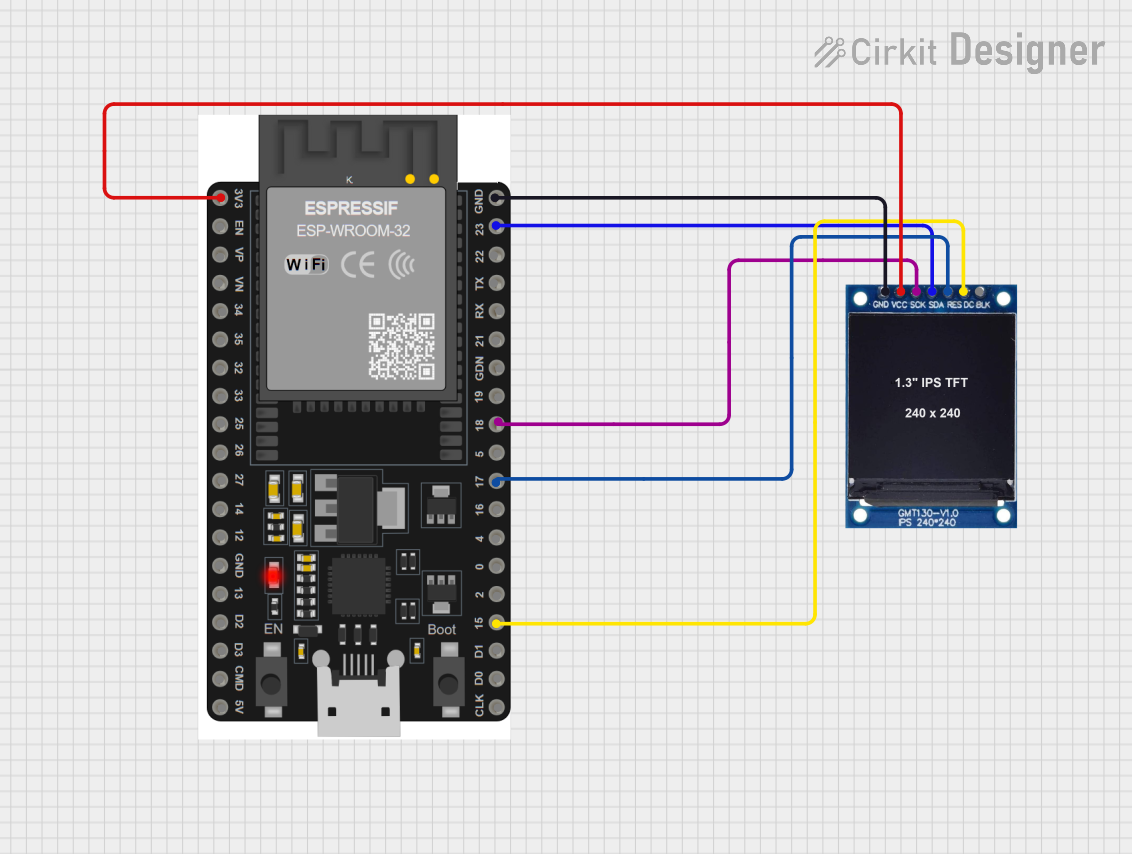
 Open Project in Cirkit Designer
Open Project in Cirkit Designer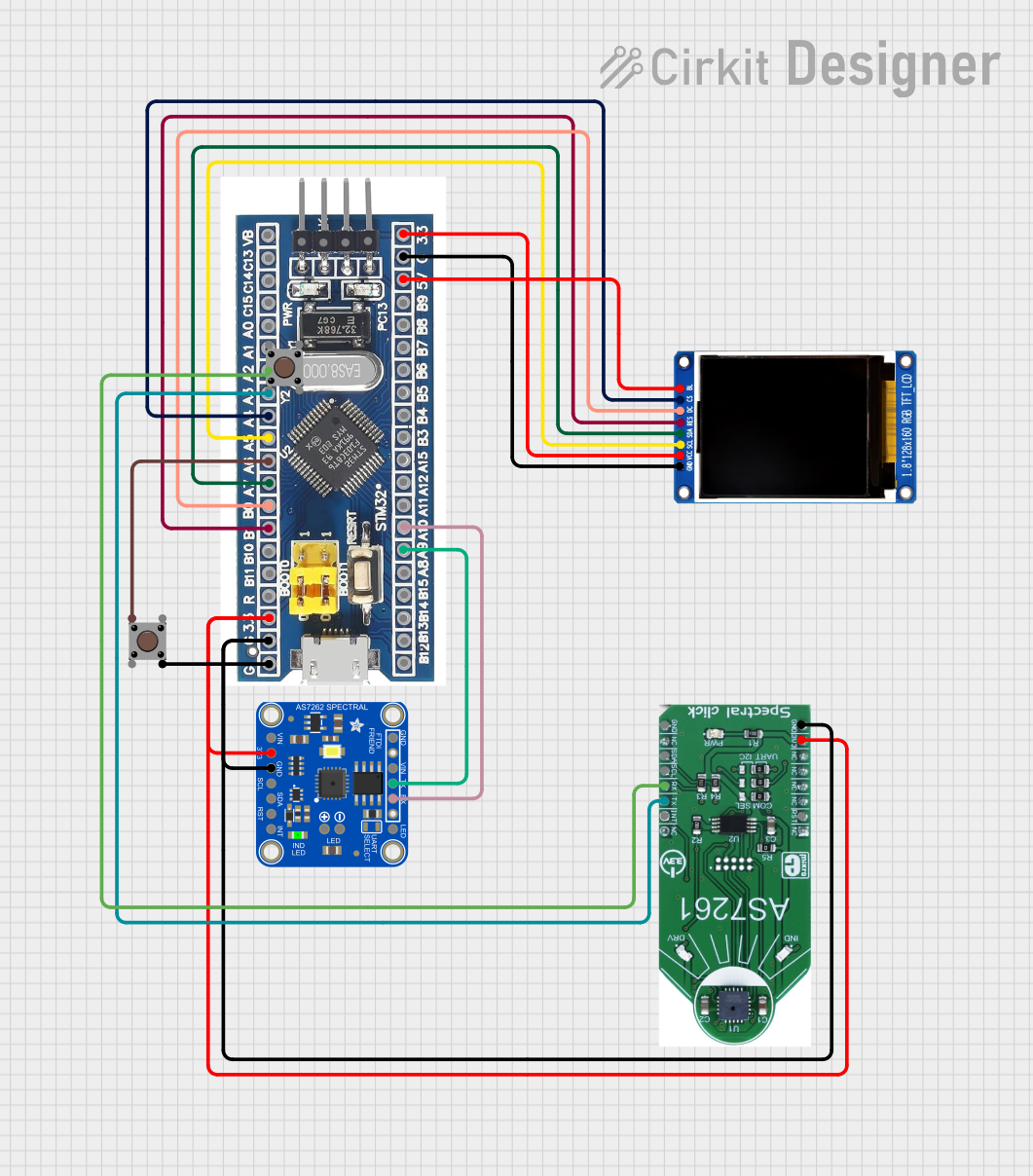
 Open Project in Cirkit Designer
Open Project in Cirkit Designer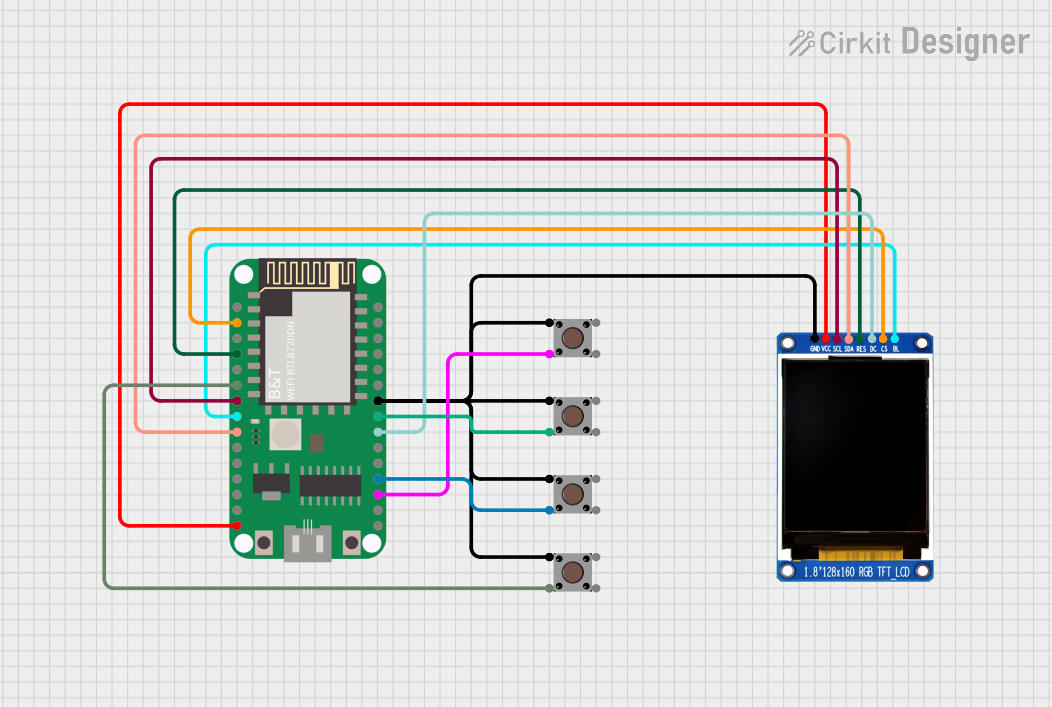
 Open Project in Cirkit Designer
Open Project in Cirkit Designer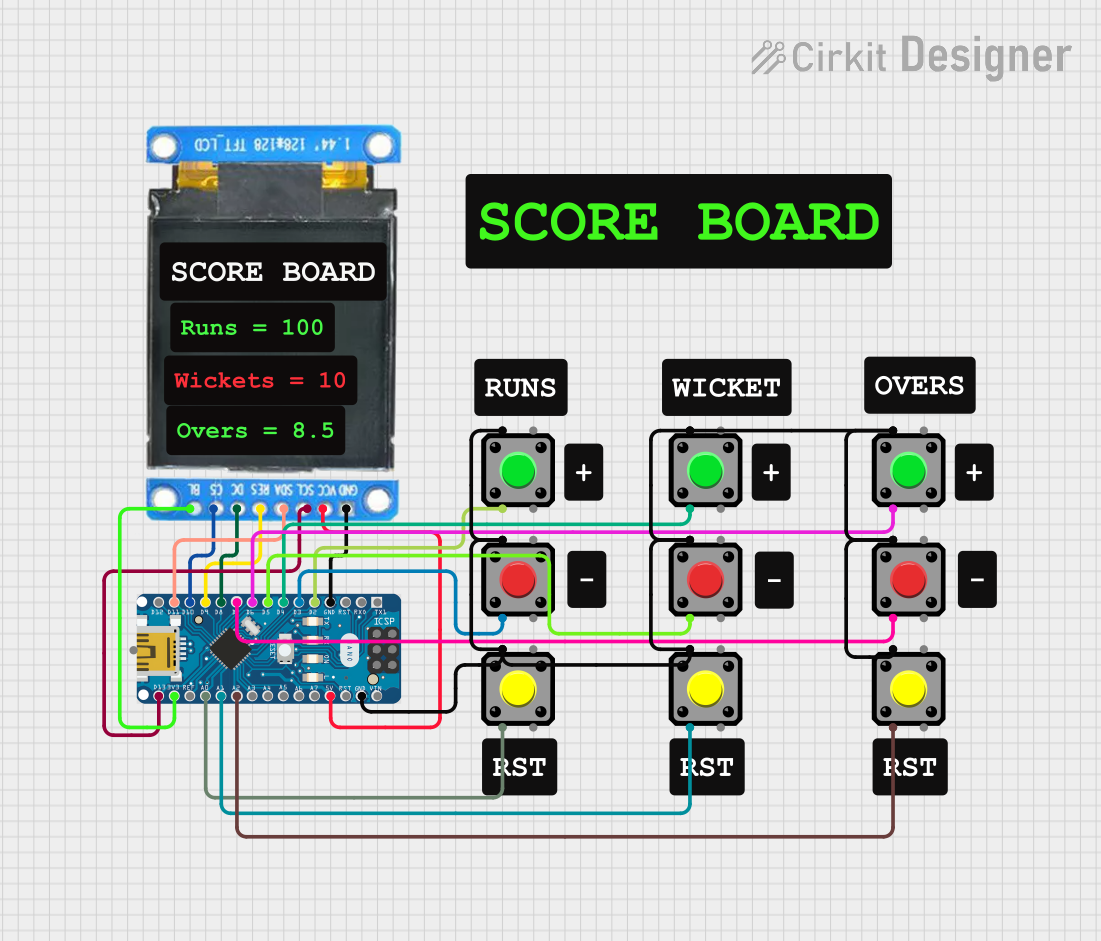
 Open Project in Cirkit Designer
Open Project in Cirkit DesignerExplore Projects Built with Waveshare 1.69 TFT

 Open Project in Cirkit Designer
Open Project in Cirkit Designer
 Open Project in Cirkit Designer
Open Project in Cirkit Designer
 Open Project in Cirkit Designer
Open Project in Cirkit Designer
 Open Project in Cirkit Designer
Open Project in Cirkit DesignerCommon Applications and Use Cases
- IoT devices with graphical interfaces
- Wearable electronics
- Portable monitoring systems
- Embedded systems requiring compact displays
- DIY projects and prototyping
Technical Specifications
Below are the key technical details of the Waveshare 1.69 TFT display module:
| Parameter | Value |
|---|---|
| Display Type | TFT LCD |
| Screen Size | 1.69 inches (diagonal) |
| Resolution | 240 x 280 pixels |
| Interface | SPI (Serial Peripheral Interface) |
| Operating Voltage | 3.3V |
| Backlight | LED |
| Viewing Angle | Wide |
| Dimensions | 30.5mm x 35.5mm |
| Operating Temperature | -20°C to 70°C |
Pin Configuration and Descriptions
The Waveshare 1.69 TFT module features a standard SPI interface with the following pinout:
| Pin | Name | Description |
|---|---|---|
| 1 | GND | Ground connection |
| 2 | VCC | Power supply (3.3V) |
| 3 | SCL | Serial Clock Line (SPI clock input) |
| 4 | SDA | Serial Data Line (SPI data input) |
| 5 | RES | Reset pin (active low) |
| 6 | DC | Data/Command control pin (High for data, Low for command) |
| 7 | CS | Chip Select (active low) |
| 8 | BL | Backlight control (connect to VCC for always-on backlight or PWM for dimming) |
Usage Instructions
How to Use the Component in a Circuit
- Power Supply: Connect the VCC pin to a 3.3V power source and the GND pin to ground.
- SPI Interface: Connect the SCL, SDA, RES, DC, and CS pins to the corresponding SPI pins on your microcontroller.
- Backlight Control: For a constant backlight, connect the BL pin to VCC. For adjustable brightness, connect it to a PWM-capable pin on your microcontroller.
- Initialization: Use an appropriate library (e.g., Adafruit GFX or Waveshare's library) to initialize and control the display.
Important Considerations and Best Practices
- Voltage Levels: Ensure all signal lines operate at 3.3V logic levels. Use level shifters if your microcontroller operates at 5V.
- SPI Speed: Configure the SPI clock speed according to the display's specifications to avoid communication errors.
- Reset Pin: Always initialize the display by toggling the RES pin during startup.
- Backlight Power: Avoid directly connecting the BL pin to a high-current source without a resistor or PWM control.
Example Code for Arduino UNO
Below is an example of how to use the Waveshare 1.69 TFT with an Arduino UNO. Note that a level shifter is required for 5V logic compatibility.
#include <Adafruit_GFX.h> // Include the Adafruit GFX library
#include <Adafruit_ST7789.h> // Include the Adafruit library for ST7789 driver
#include <SPI.h> // Include the SPI library
// Define pin connections
#define TFT_CS 10 // Chip Select pin
#define TFT_RST 9 // Reset pin
#define TFT_DC 8 // Data/Command pin
// Create an instance of the display
Adafruit_ST7789 tft = Adafruit_ST7789(TFT_CS, TFT_DC, TFT_RST);
void setup() {
// Initialize serial communication for debugging
Serial.begin(9600);
Serial.println("Initializing display...");
// Initialize the display with a 240x280 resolution
tft.init(240, 280);
// Set the rotation (0-3 for different orientations)
tft.setRotation(1);
// Fill the screen with a solid color
tft.fillScreen(ST77XX_BLACK);
// Display a message
tft.setTextColor(ST77XX_WHITE);
tft.setTextSize(2);
tft.setCursor(10, 10);
tft.println("Hello, Waveshare!");
}
void loop() {
// Add your code here to update the display
}
Troubleshooting and FAQs
Common Issues and Solutions
No Display Output:
- Verify all connections, especially the SPI pins.
- Ensure the VCC and GND pins are properly connected.
- Check if the RES pin is toggled during initialization.
Flickering or Distorted Display:
- Reduce the SPI clock speed in your code.
- Ensure proper grounding to avoid noise interference.
Backlight Not Working:
- Confirm the BL pin is connected to VCC or a PWM pin.
- Check for loose or incorrect connections.
Display Not Responding to Commands:
- Verify the CS pin is correctly connected and toggled in the code.
- Ensure the correct library and driver (e.g., ST7789) are being used.
FAQs
Q: Can I use this display with a 5V microcontroller?
A: Yes, but you must use level shifters to convert the 5V logic signals to 3.3V.
Q: Is the backlight brightness adjustable?
A: Yes, connect the BL pin to a PWM-capable pin on your microcontroller for dimming control.
Q: What library should I use for this display?
A: The Adafruit GFX and Adafruit ST7789 libraries are recommended for easy integration.
Q: Can I use this display with Raspberry Pi?
A: Yes, the display is compatible with Raspberry Pi. Use the SPI interface and appropriate libraries for setup.
By following this documentation, you can successfully integrate the Waveshare 1.69 TFT into your projects and troubleshoot common issues effectively.